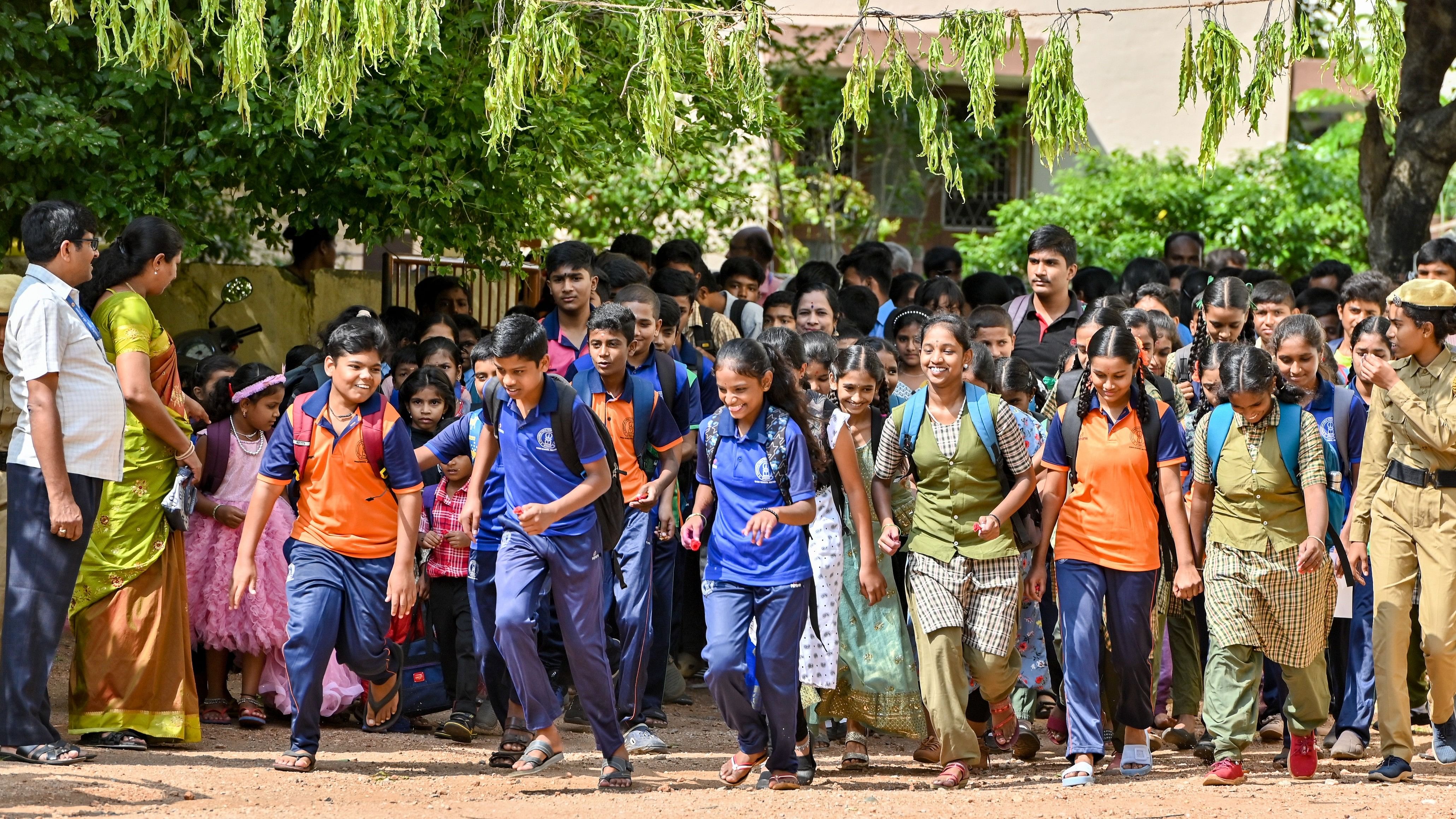
Reports of child abuse are alarmingly frequent, understandably raising concerns among parents.
Credit: DH Photo
Schools have reopened, making this an ideal time for school leadership to review measures ensuring the safety and security of children, which should be their foremost duty.
Reports of child abuse are alarmingly frequent, understandably raising concerns among parents. What can we do in this situation?
First, we must acknowledge that abuse can occur in all conceivable places—homes, schools, public transport, shopping malls, etc.—although many cases go unreported. The POCSO (Protection of Children from Sexual Offences) cases that are reported are just the tip of the iceberg.
We need to educate our children and equip them with the knowledge and life skills required to protect themselves from undesirable situations. Teachers should impart life skills in an age-appropriate manner to make children aware of the dangers around them. Many short films are available to teach these life skills. For instance, children must understand personal space to distinguish between good and bad touches.
We need a different strategy to safeguard small children or toddlers. Here, parents at home and teachers and care givers at school play a decisive role. These children are too small, defenceless, and voiceless. So we need to create a ‘safety net’ around them in all circumstances, maintaining constant and relentless vigilance around them to ward off potential dangers.
As parents, it is our duty to protect our children from traumatic experiences of all kinds, especially sexual abuse, which can leave them with lasting psychological scars. We must act with great care and urgency.
Schools, too, must be proactive. They must sensitise their teachers and non-teaching staff, including the vehicle staff, on the moral imperative to protect children. Eternal vigilance is the only viable answer; no CCTV can be a substitute for human vigilance. A safe environment, carefully engineered jointly by committed management and its staff, must be ensured in every school.
Preventable Accidents
Every paediatrician has some blood-curdling stories to narrate about accidents involving small children. Some they could save, but some they could not. Those who survive have to live through traumatic memories and visible scars on their bodies and minds. A child who has been in an accident will never be the same again.
There are two types of accidents: those that happen and those that are caused. Accidents that happen are often inevitable because of the very nature of children’s curiosity and impulsivity. However, accidents that are caused are preventable if adults act with sensitivity and care.
We need to educate parents as well. Schools can turn their PTA meetings into educational opportunities by inviting eminent paediatricians and counsellors to address parents’ concerns about effective parenting, which includes safety issues. Children being left alone in parked cars, dying of suffocation, or inhaling carbon monoxide from the AC are reported occasionally. Are these not preventable?
We need to teach children about road safety. Parents should take children to the streets and show them how to cross the streets carefully. This hands-on approach can yield positive results.
We need to make our homes safe for children. There are many precautions we can take to prevent accidents at home.
Many people live in high-rise apartments these days. We come across terraces and balconies without any protective mesh or grill cover, which can be death traps for children. The National Building Code (NBC) has strict guidelines about safety measures to be followed in the construction of buildings. Sadly, these are not adhered to in many buildings.
Emergency escape plans and fire extinguishers should be readily available. There should be gates at the top of stairs, to be opened by adults when needed.
Children younger than 5 years are at great risk of choking while eating. Every day, hundreds of children are treated in hospitals after ingesting something poisonous. Lots of things around home can be potentially poisonous, such as household cleaners, alcohol, lead paint, and medicine. Hyperactive and curious children will often investigate and sometimes try to eat or drink anything that is within their reach. Parents need to be extremely vigilant.
Small children get drowned while playing in water. A bucket of water or a bathtub can kill a child if left unattended, even for a few minutes. Parents need to be constantly watchful. Fireplaces, stoves, and barbecues are all potentially hazardous to children. The list is endless, but vigilance is the only answer. Children are our common wealth and hope. We must protect them from all possible dangers.
(The writer is director, Little Rock Group of Institutions, Udupi)